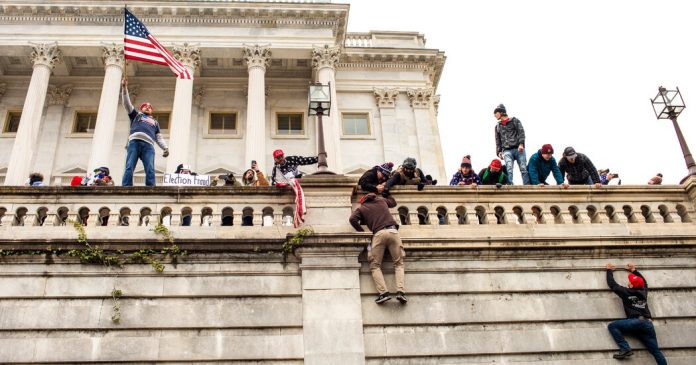Grappling with the Jan. 6 attack on the Capitol is hard enough for adults. How do you help children make sense of it? Two articles appearing this weekend in The New York Times for Kids, a section that runs the last Sunday of every month as part of the print newspaper, tackle that challenge. The editor of the section, Amber Williams, who wrote the main article, said it was one of the most difficult pieces she had written for the section. In a lightly edited conversation, she talked about the task.
I understand you sometimes plan these issues pretty far in advance. When did you decide that you needed to include an article on the Capitol riot?
We’re planning more than a month out for each issue. For this one, the lineup was put together before our holiday break in December. The articles were reported, the art was coming in, and some pages for the issue were already designed. Then Jan. 6 happened. At that point, we discussed adding a callout on one page that asked our readers for questions about what had happened, which we would answer in the February issue. At the time, things were just too chaotic. There were too many unknowns in the days directly after the riot, and too much was coming out that was changing how it was viewed.
But once impeachment proceedings against President Donald J. Trump began, we knew we had to rip up the page and figure out how to tell the story, even as things were still changing. I spent Martin Luther King’s Birthday, which was just a few days before the issue went to press, writing the article about the siege on the Capitol. Deb Bishop, our design director, led the art team in figuring out how to visually emphasize the article’s importance. And Alexa Díaz, our social media editor, used our new Instagram account to solicit questions about the impeachment from our followers that we adapted for print as well.
Why was the attack on the Capitol important to include in this issue?
It was big, defining news about our country. The New York Times for Kids mimics the “adult paper,” as we call it. It’s our job to reflect what’s going on in the world and to help our readers understand it. We don’t hide or sugarcoat the news — and most kids are already hearing about major news events from TV or social media or the adults around them — and so we strive to include kids in these conversations by explaining what adults are discussing and may take for granted.
Who are your readers?
Our readers span a large age range, from roughly 8 to 14. And we hear from them all the time. It’s great. They’re constantly writing to our Kids inbox and direct messaging our Instagram account to tell us about their experiences and to ask us questions. We visit classrooms (now virtually) nearly every month to talk to fourth graders for our Opinion pages. Our reporters are interviewing kids and teens for articles. And some kids even write for us.
How did you approach this article?
It was definitely one of the most challenging pieces I’ve written, both because there were so many parts of this story that it would have been impossible to untangle them all in 400 words and because there were so many unknowns and large existential questions. After trying many different ways to start the article, I decided to frame it around the concept of a lie, because kids are told from a very early age that they shouldn’t lie and that lies cause harm. It was a simple concept to build on to help explain a complex reality.
How is your piece different from an article about the riot that might appear in the “adult paper”?
You’ll notice at one point that the piece directly addresses readers and acknowledges that they may have felt afraid and that this is understandable. And it goes on to describe why others were and are afraid.
What do you want kids to take away from the article?
An accurate and fair understanding of what happened on Jan. 6 and why the president was impeached. I also want to point out that the Kids section benefits from all of the incredible work of New York Times journalists, who often write for us! Only by following their coverage were we able to explain what had happened with some clarity.
You have recently tackled a number of hard topics, like the coronavirus pandemic, in your pages. Is there a particular way that you try to approach subjects that even adults find upsetting and difficult to process?
We acknowledge that the world can be upsetting, and meet kids with all different experiences in their realities. Kids are sources for most of our articles — they tell us about their experiences with race and racism, or with hunger, or with a parent who is out of work. Our goal is to broaden their worlds and deepen their understanding, but also to meet them where they are. We respect them. They are not hearing about the pandemic for the first time from us — they already know about it. They’re experiencing it. So, we often think of our kid sources as being in conversation with our kid readers: “Here’s how I’ve been spending my school days. What about you?”
Are there any particular experts, like psychologists or teachers, who have provided guidance about how to discuss tough topics with kids?
The kids themselves are our experts. We listen to them first and foremost.








